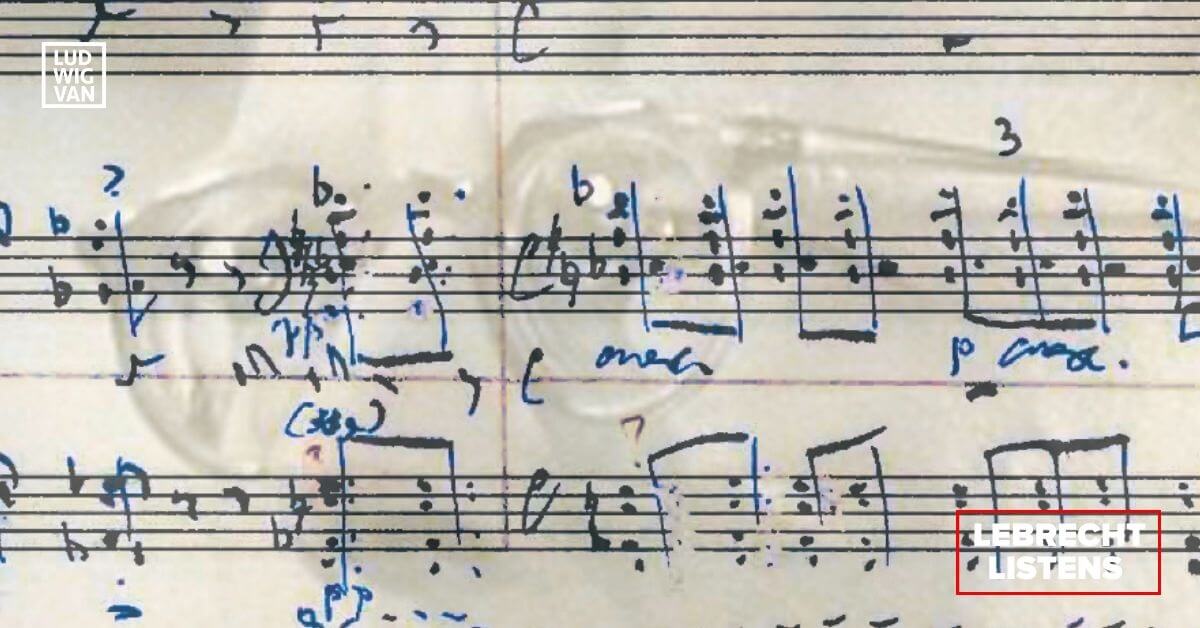
Shostakovich: Works Unveiled (BIS Music)
★★★★☆
🎧 Spotify | Amazon | Apple Music
This album solves a mystery that goes back eight decades. Anyone immersed in the music of Gustav Mahler will have noticed that the opening of Shostakovich’s sixth symphony is identical to Mahler’s unfinished tenth.
How did that happen? Mahler’s tenth was unheard outside Vienna, where a partial facsimile had been published in a few hundred copies in 1924. Shostakovich never left the Soviet Union. How could he possibly have seen a copy of Mahler’s manuscript?
All, or part, can now be revealed. The French pianist Nicolas Stavy has recorded a four-hand piano arrangement by Shostakovich of one-third of the Adagio of Mahler’s 10th. Russian experts date it to the late 1920s, but they cannot say where Shostakovich saw the original facsimile, since no copy existed in Russian archives. The assumption is that it was owned and shared by Shostakovich’s polymath friend Ivan Sollertinsky, but we cannot be sure.
Violin Sonata (Unfinished) · Nicolas Stavy · Sueye Park
What we can now ascertain that Shostakovich made a transcription of the Mahler theme, which probably emerged from his unconscious when he composed the sixth symphony under Stalin’s terror ten years later in 1938. This retrieval is doubly fascinating, both for evidence of its existence and for the random atonalities that the Russian composer interpolates into Mahler’s score.
There are further revelations here. One is an unfinished 1945 sonata for violin and piano which signally fails to reflect Stalinist triumphalism at the end of war. Shostakovich must have tucked it into a drawer for future use because, as Elizabeth Wilson points out in a magisterial sleeve-note, it pops up in an early sketch for the tenth symphony of 1953.
No less astonishing are four piano pieces from around 1917 to 1919, one of which is titled Funeral March in Memory of Victims of the Revolution and another, simply Toska (Nostalgia). These were forbidden sentiments under early Bolshevist violence, and the composer did well to suppress them. What they demonstrate is that at no time did Shostakovich lose sight of the human cost of the historic events that swirled around him. He mourned the blood that Lenin shed, and the music he wrote leaves no ambiguity to his perspective.
The largest work here is an unrecorded setting of the 14th symphony for two soloists, piano and percussion — an interesting exhumation, but not in the same stratosphere as the three unveiled enigmas.
To read more from Norman Lebrecht, subscribe to Slippedisc.com.
#LUDWIGVAN
Get the daily arts news straight to your inbox.
Sign up for the Ludwig van Daily — classical music and opera in five minutes or less HERE.
- LEBRECHT LISTENS | Two Releases Of Elgar Symphonies To Compare - April 19, 2024
- LEBRECHT LISTENS | Jordan Bak’s Cantabile For Viola Reveals The Neglected Instrument’s Beauty - April 12, 2024
- LEBRECHT LISTENS |David Robert Coleman & The Berlin Radio Symphony Orchestra Reveal The Charms Of Walter Kaufmann - April 5, 2024



